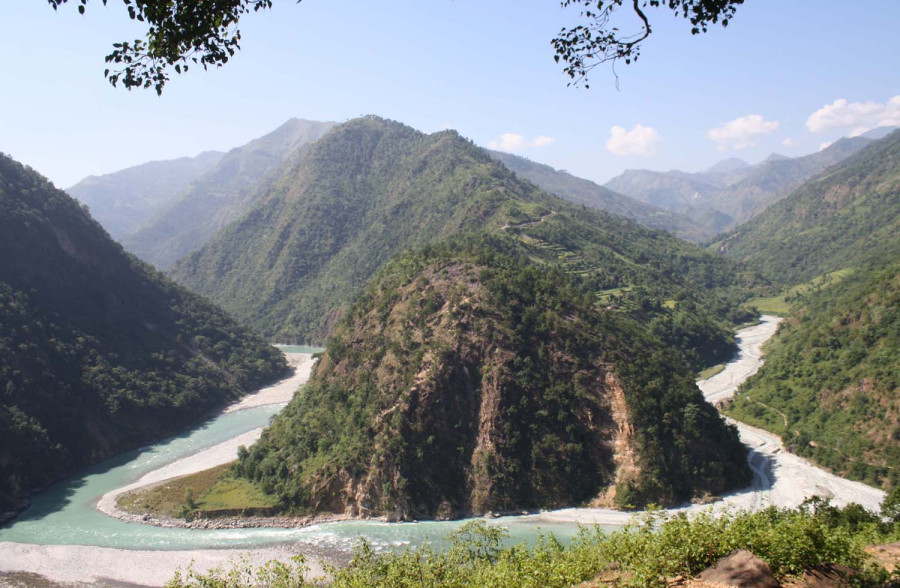Money
Developers complain tree clearance guidelines could push up their costs
A project similar to the Tanahu hydel scheme which cleared around 181,000 trees spread over 417 hectares of forests would have to pay Rs688 million for forest clearance.
Prahlad Rijal
The developers of high priority projects, undertakings with funding approval from Investment Board Nepal and transmission line expansion projects complained they could experience financial stress due to the stringent environmental regulations issued by the Forest Ministry concerning forest clearance.
The new guidelines recently approved by the Cabinet requires project developers to make a lump sum payment for the trees they intend to fell, plant 10 times the number of trees chopped down, and look after the saplings for a period of five years.
“The forest clearance conundrum which has bogged down many projects has become more complicated with the issuance of the new provisions,” said Sachen Gautam, communications official at Tanahu Hydropower. “Upcoming projects will face a double whammy of paying large sums for clearance and carrying out afforestation programmes for five years at their own expense.”
According to Gautam, the ministry should allow developers to pay the fee for a clearance permit in instalments rather than all at once, and the government itself should manage the afforested areas utilising this money.
If the projects receiving clearance permits cannot provide replacement land for afforestation, they have to pay a large sum of money determined by the ministry in line with the nature of the forest and the tree density, as per the Forest Clearance Guidelines 2019.
The ministry has fixed the payment amount for chopping down trees by classifying forests depending on tree density, species of flora and fauna and location.
As per the guidelines, areas with less than 25 trees per hectare are pasture lands, woodlands with 25 to 100 trees per hectare are classed as low density, areas with 101 to 200 trees are classed as mid-range forests, and areas with a concentration of more than 200 trees on a hectare are classed as high quality forests.
Projects that need to cut Sal trees in the forests of the Tarai, Inner Tarai and Chure region have to pay Rs1.5 million to Rs1.65 million per hectare depending on tree density.
Chopping Rhododendron forests would cost the project up to Rs1.55 million per hectare, cutting down Khayer and Sisau trees would require the project to pay up to Rs1.32 million per hectare.
A hydropower project similar to the Tanahu hydel scheme which has cleared around 181,000 trees spread over 417 hectares in a national forest would have to pay Rs688 million for forest clearance.
The project will have to manage further resources to plant 1.8 million new trees and invest in taking care of the saplings for five years before handing over the afforested area to the respective forest office. If the project is unable to look after the young trees, it must pay a fee fixed by the ministry to the forest office to do so.
The rules require priority project developers to allocate funds, human resources and transportation charges to clear the forests and haul the logs to the place designated by the forest office.
The ministry has relaxed the afforestation regulations which originally required developers to plant 25 trees for every tree cut down. Also, developers who cannot take care of afforested lands can pass the task to the forest office by making a payment.
Despite that, infrastructure experts say the new guidelines are impractical and not development-friendly.
“The cost of the projects will skyrocket if the guidelines are implemented, and priority projects will have to go out of their scope to plant trees,” said Tulsi Sitaula, a former secretary of the Infrastructure Ministry. “Such provisions issued without proper coordination with all stakeholder agencies will also hit the inflow of foreign direct investment in major projects and should be revised.”
Currently, many high priority projects have been delayed owing to the issue of forest clearance, and in practice, the developers including state bodies mired in clearance issues have time and again pushed the Cabinet to allow them to chop trees.
Recently, the Nepal Electricity Authority had to receive clearance to cut 38,545 trees on the route of the planned Hetauda-Dhalkebar-Duhabi transmission line in Rautahat and Bara districts from the Cabinet amid obstructions.
Forest Ministry officials downplayed the concerns of project developers and experts saying that the guidelines have been placed to discourage rampant deforestation in the name of development, and that some of the provisions have been relaxed too.
“The developers have a habit of socialising their costs and privatising benefits, but when it comes to converting national forest areas which are public property into viable businesses, the ministry has to be restrictive,” said Sindhu Prasad Dhungana, spokesperson for the Ministry of Forest and Environment.
“The provisions are not regressive as said, and we have relaxed the lease terms for government projects and reduced the number of trees required to be planted. The ministry wants to discourage deforestation for even small development projects which can be implemented in treeless areas.”




 7.12°C Kathmandu
7.12°C Kathmandu















